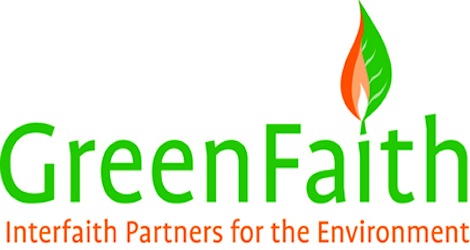Creating Religious Environmental Leaders
By Harold R. Talbot View and Print as PDF.
View and Print as PDF.
“Imagine a world where in every community religious leaders speak as influentially on the environment as they do on other issues… where houses of worship use renewable energy, produce no solid waste, press for clean-ups of local toxic sites, and lead community efforts for environmental sustainability… where religious educators teach children that caring for the earth is an ethical obligation, just like feeding the hungry.”
So reads the invitation to the fellowship program of GreenFaith, an interfaith environmental organization training leaders to make this imagined world a reality. The GreenFaith Fellowship Program is North America’s only comprehensive education and training program to turn clergy and laity into religious-environmental leaders.
As a GreenFaith Fellow, sponsored by the Environment Committee of the Episcopal Diocese of New York, I completed an eighteen-month program of education, inspiration, and interfaith fellowship. My “class” of GreenFaith Fellows numbered twenty-two people, including ten Christians of varied stripes, ten Jews of equally varied stripes and, for the first time, two Muslims. We did extensive reading, some writing, and had ten webinars and three retreats of four days each. At the retreats we listened to learned religious and societal environmental leaders and, perhaps most importantly, participated in animated debate and discussion with our classmates. We were the fourth class of GreenFaith Fellows. Including the current class, we are now more than one hundred Fellows from all over the country.
Our job, as I see it, is, not only to advance specific steps for sustainability in our communities and places of worship, but also to “preach” the thesis that there is a spiritual aspect to caring for creation and that this spiritual aspect is common to virtually all faith traditions.
Our Fellowship program had three segments: 1) the practical aspects of “greening” our houses of worship, including opportunities for activity by fellow parishioners and neighbors; 2) a review of the basis for Earth stewardship as ingrained in the holy texts and theological writings of various faith traditions; and 3) a review of the disproportionately negative consequences of environmental degradation on “the least of these”, the poor.
While recycling and “green” marketing may have become a part of popular culture, substantive environmental analysis, action, and theology (of the kind in which we were trained) remain not only alien to many but also counter-cultural. Active concern for the state of Earth, our tiny planet, our home in the vast and expanding universe, has not been a high priority in the last ten or fifteen years. Around the globe we have had other priorities. We have been caught up in strife and economic crisis. Reduced attention by governments and the limitations of civil society have resulted in continued damage to our lands, our species, our water, our sea life, and perhaps most of all, to our climate, the air that we breathe, the air that sustains life. I am no scientist—but I am an educated man and the evidence is all around us. I can see it!
There are, as we know, numerous civil society organizations—and some government organizations—that focus actively and responsibly on issues affecting the environment. Yet, progress is limited. The Copenhagen, Cancun, and Durban talks were disappointing—and even the recent “Rio plus 20” meetings were very limited in terms of solid commitments by Nation States. Polls, conducted by the Pew Research Center, suggest the level of interest of the public is less than a generation ago.
James Gustave (Gus) Speth, the great environmental writer and thinker, has suggested that we need a whole new consciousness about Earth—its future, how we live in it, and how we think about it. I have come to believe that he is right. But who will start this process, this transition? It may actually be underway already through the slow but steady progress of local government and private initiatives. We have one right in my town, Bedford, NY. It’s called “Bedford 20/20”. It is working to reduce by twenty percent the town’s emission of “greenhouse gases” by 2020.
But we need a ground swell! This new consciousness must permeate civil society. After my eighteen months in the GreenFaith Fellowship program, I see members of the world’s great religious and spiritual traditions as wonderful participants and contributors to this ground swell—indeed, potential leaders of it. It is we who are equipped to make the argument on moral grounds. It is we who are in a position to articulate a new and comprehensive consciousness anchored in some very old spiritual values. It is we who can bring, not just individuals, but communities. It is time for us to enter the field. We may differ in many ways—from the way we worship, to whom or what we worship—but we have a very common interfaith view of Earth, the universe, and our stewardship responsibilities. Let the GreenFaith Fellowship spread like wildfire! Let leaders and thinkers and students of the environment of all faiths join the throng—become GreenFaith Fellows. We, the first one hundred, welcome you!
We who are many are one body, for we all share the same bread.
—Anglican Church of New Zealand Book of Common Prayer
Learn more about GreenFaith and get involved!
Become a GreenFaith Fellow today!
Read more articles like this one in the Nov 2012–Jan 2013 issue, “Hope for Eco-Activists: Discovering an Environmental Faith“
Harold Talbot is a graduate of Princeton University (BA, 1958) and the Darden School of the University of Virginia (MBA,1965). He is retired from a career of more than 40 years in the international insurance and reinsurance business. He was Senior Warden of St. Matthew’s Church in Bedford New York, is a member of the Environment Committee of the Episcopal Diocese of New York and serves on the Board of Directors of Earth Charter Associates. He has been happily married for 48 years, has a daughter in Bristol, Rhode Island, a son in Brooklyn, New York and four grandchildren.










